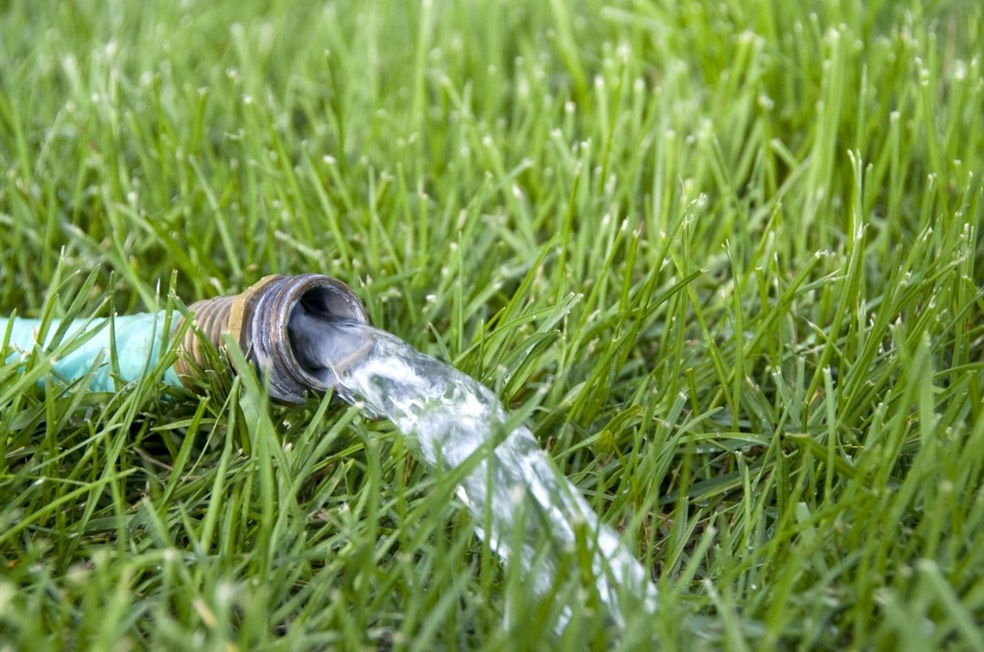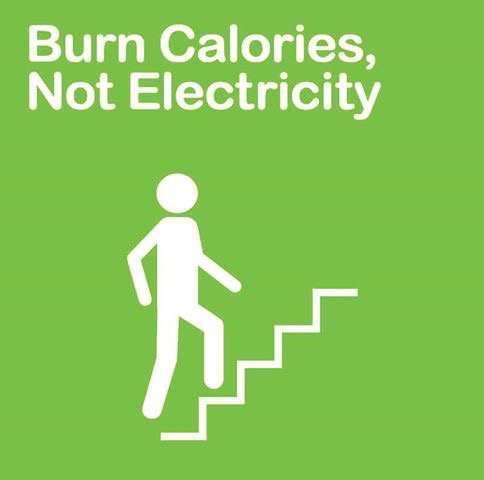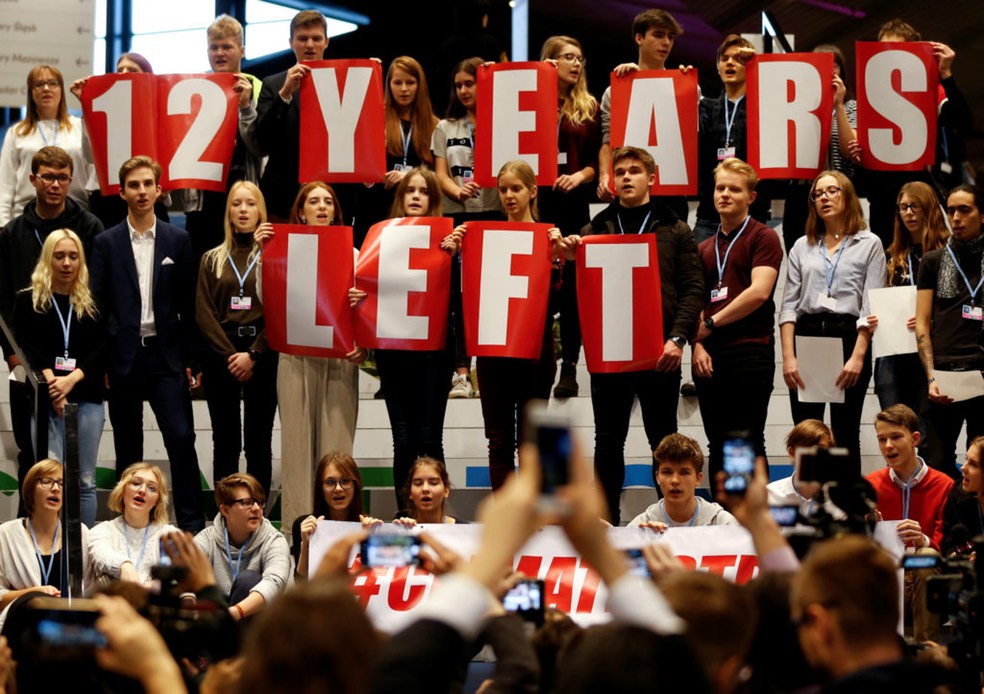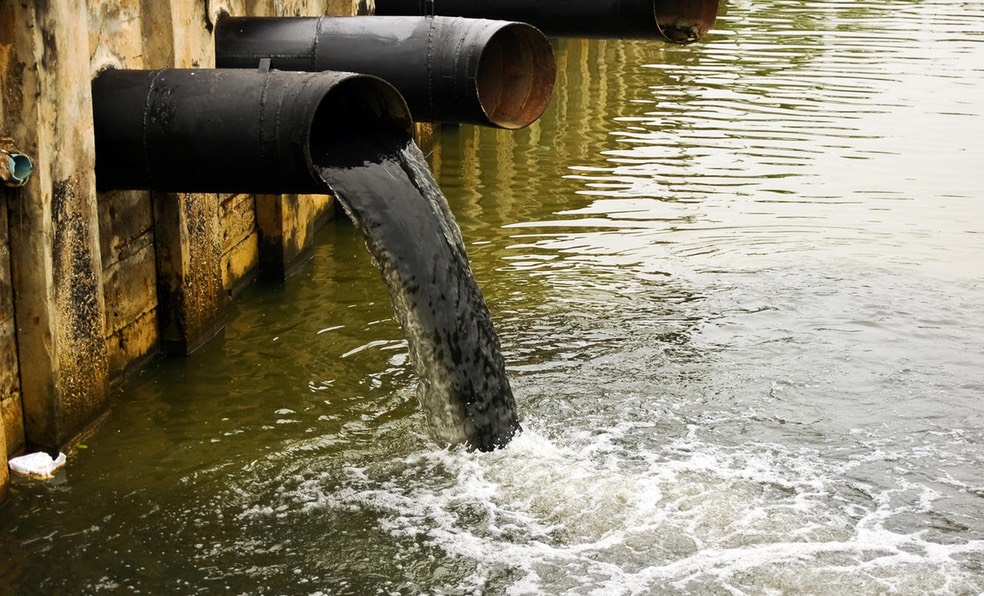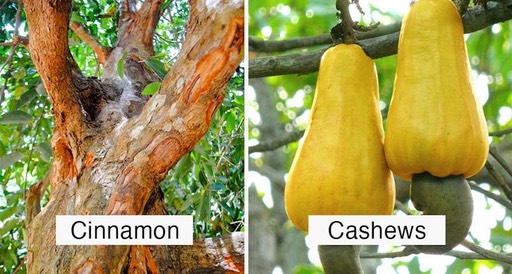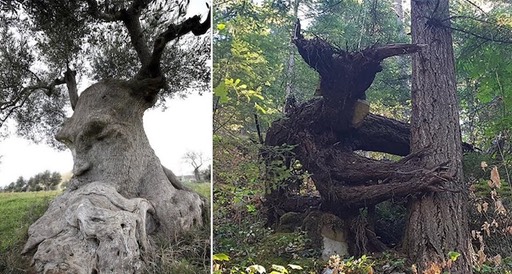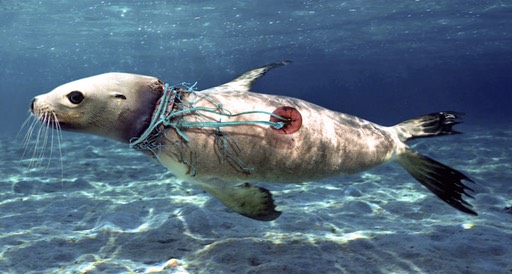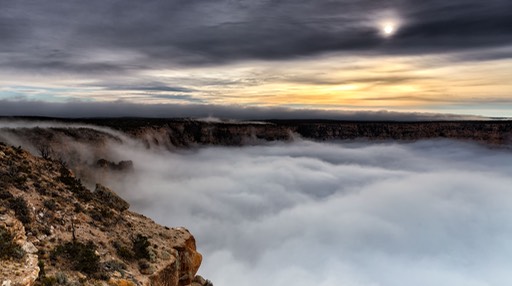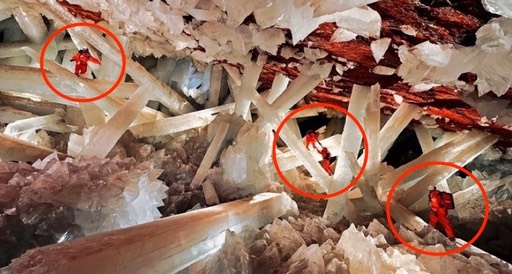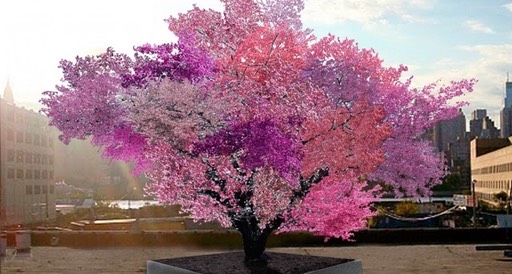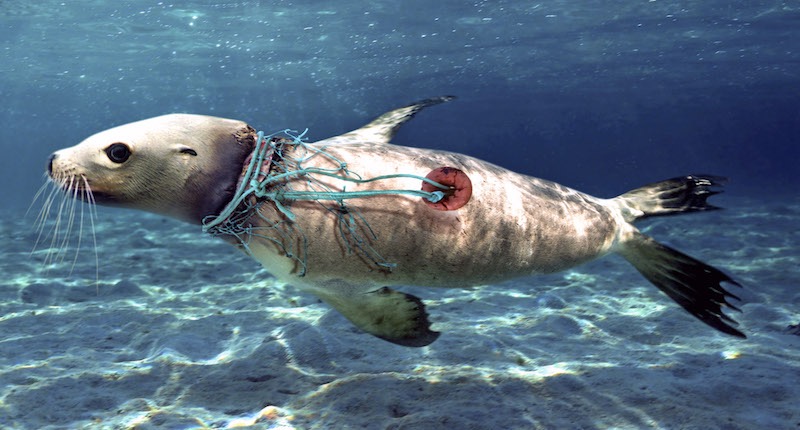
Photo by: Hayley Pugh
Here’s the thing: The climate is warming, our population is growing, resource consumption is surging, and it isn’t looking so great for us—or our fellow earth-dwelling organisms. Speaking of which, the UN just released a report warning of “unprecedented” decline in environmental health and the threat of imminent extinction for some 1 million species.
Today, we decided to put together a series of simple, yet crucial steps you can start taking today, in order to start the process of reversing the damages we’ve caused to our planet over the course of our existence. We kindly ask that you share this article with your friends in order to create awareness on this serious issue.
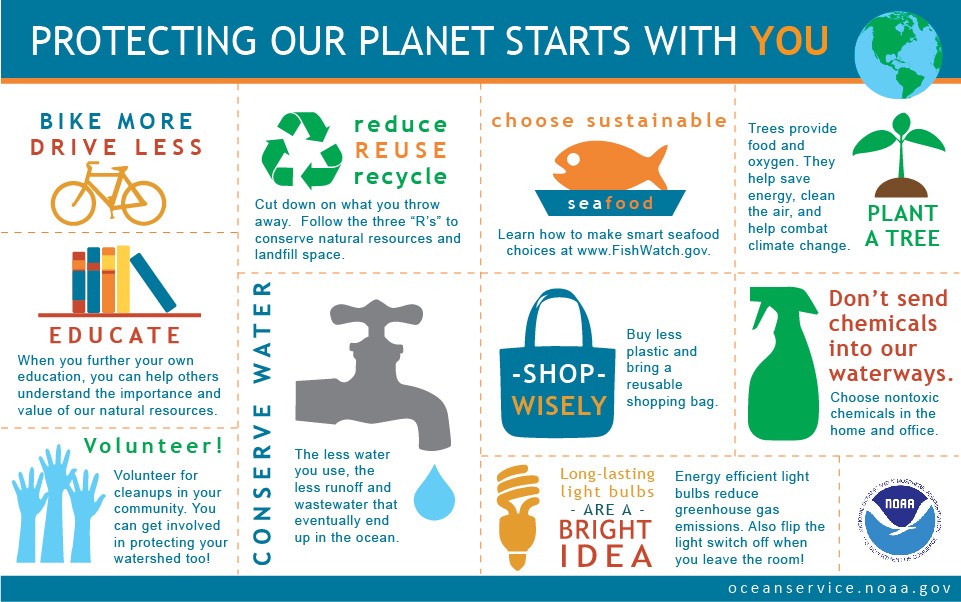
Photo by: oceanservice.noaa.gov
1 - Reduce, reuse, and recycle.
You may be familiar with the motto from the environmental movement, "Reduce, Reuse, Recycle." These three actions are all focused on reducing waste, whether through the conservation of raw materials and energy, or the reuse and recycling of products.
You can do your part in reducing waste by watching what you buy and reconsidering what you do with it once it is no longer useful to you. There are also several simple habits to adopt that will allow you to consume less water and electricity.
Being green isn't time-consuming, it saves you money, and gives you a sense of satisfaction from making environmentally friendly choices.
You can do simple things like:
2 - Buy products with less packaging.
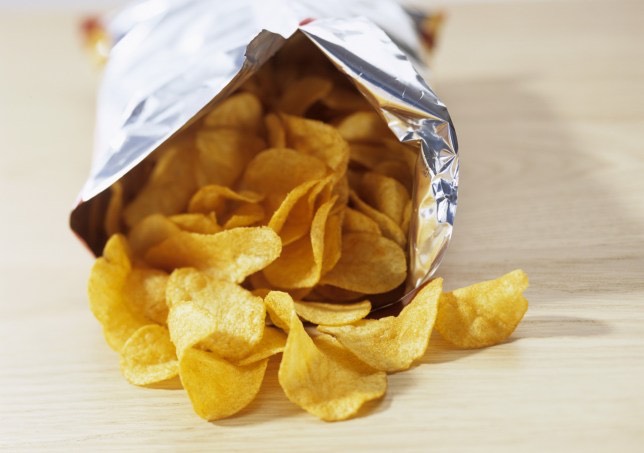
Picture by: Getty
If you’ve bought a bottle of water anytime over the last few years, you might have noticed a change. Maybe the bottle seemed thinner, the cap a little smaller, or the label a bit different. Are companies just cutting corners? Or could something else be going on?
Packing-related materials make up more than 30 percent of landfill waste—or around 75 million tons each year. (Of that, nearly two-thirds is food packaging.) Globally, consumer goods generate around 207 million tons of packaging waste annually.
These numbers are inspiring a countrywide push for a packaging detox. And companies are taking note—hence the slimmer water bottles with smaller caps and recycled labels. Here’s how you can get in on the action.
3 - Take a reusable bag with you shopping.
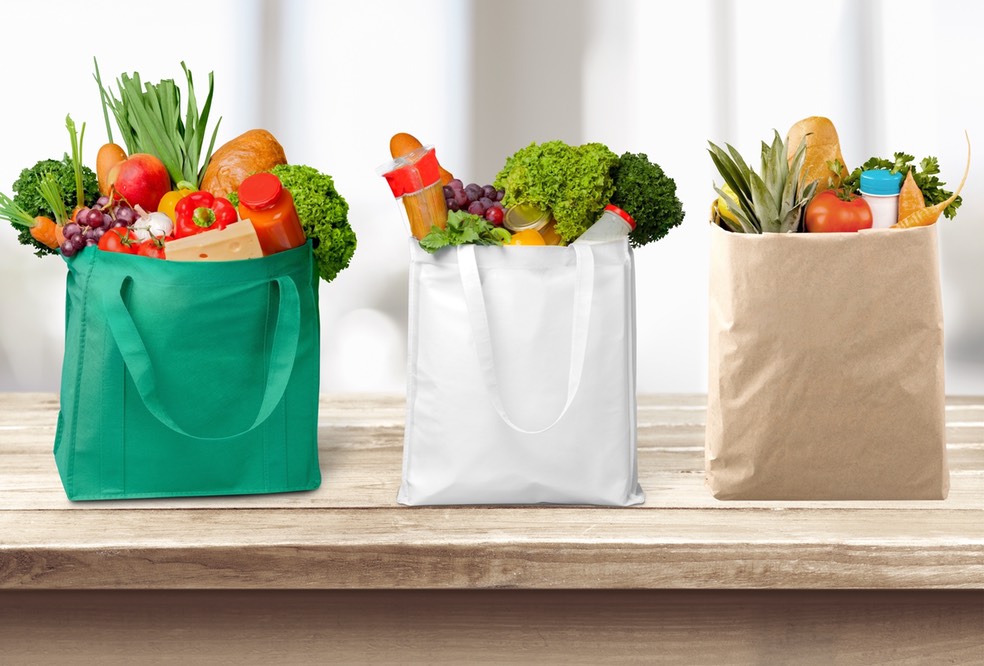
Photo by: earth.com/news/reusable-shopping-bag/
We all have that space tucked away in our house reserved for unwanted plastic bags. Yes, they may come in handy, but there’s also a hesitation there to throw them away immediately after receiving them (The average person uses a plastic bag for only 12 minutes before discarding it).
Rather than collecting an abundance of single use plastic bags that are not only inconvenient, but harmful to the environment and costly, try using a reusable shopping bag. There are plenty of benefits to investing a reusable bag. Listed here are some of the most advantageous benefits to using a reusable shopping bag.
- Save Money
Using reusable bags over plastic bags can save money in several areas – Including your own pocket.
Many stores are beginning to impose an extra charge for plastic bags. By bringing your own reusable bag, you are saving money each time you go to the grocery store, buy a new outfit, or run errands. Many stores, if they don’t charge for plastic, are offering an incentive for bringing your own bag. So either way you look at it, you’re saving money on each purchase.
- Save Resources—And Therefore, Money
Plastic bags are non-biodegradable, use crude oil and natural gas to manufacture, and require even more fossil fuels to ship.
By using a reusable bag, you are not only reducing the amount of non-renewable resources necessary to produce plastic bags, but you’re also reducing the amount of money your community spends on clean up costs each year.
Regardless of how you dispose of plastic bags, they end up blowing onto the street, clogging waterways, and infiltrating other natural environments. Not only is this an eyesore, but it also costs money to clean up.
The state of California spends $25 million to send plastic bags to the landfill each year. And that doesn’t include the $8.5 million spent on removing plastic bags from the streets. By using reusable bags, you are reducing the amount of taxpayer money that goes into litter clean up, leaving room for other community funded projects.
- De-clutter Your House and Save Space
Plastic bags take up a lot of room and often clutter your household, car, and workspace. Think about it: If you take home 5 grocery bags worth of food a week, that comes out to 260 bags a year. And that’s only on groceries. Those plastic bags end up cluttering your kitchen cabinets, your pantry, and your car; wasting space for other, more important things other than trash that we can’t seem to part with.
Though larger than a plastic grocery bag, reusable bags can fold up and end up taking up significantly less space than your guilty storage of plastic bags. And as opposed to the 20 to 50 plastic bags floating around your house, you’ll have maybe three or four reusable bags to take their place.
- Durability and Reliability
Unlike the flimsy plastic bag you receive from retailers, reusable bags are durable and can carry more at a time. Go ahead, fill up that cotton or hard plastic bag to the brim—it won’t break. That means less trips to and from your car and more to be comfortably carried at a time.
Their durability also prevents them from ripping or tearing. Say goodbye to spilled groceries, multiple trips, and double bagging.
And because they are reliable, you can use them for multiple purposes. Personally, I use my reusable totes for lesson plans, groceries, beach bags, and even as a purse. There are infinite uses to these convenient and packable bags.
- Peace of Mind
Not only will you create more space in your home, but you’ll have peace of mind. Plastic bags are one of the top ten most common objects found in oceans and on beaches. An estimated 500 billion to 1 trillion plastic bags are used each year, and they’re ending up in oceans, soils, animals, and rivers.
Believe me, you’ll feel so much better once you stop accidentally collecting unnecessary plastic bags. Whether you’re aware of your consumption patterns or not, as you begin to see the waste disappear, you’ll feel it, and it feels great.
4 - Do without disposables.
Photo by: standard-holdings.com/disposables/
The billions upon billions of items of plastic waste choking our oceans, lakes, and rivers and piling up on land is more than unsightly and harmful to plants and wildlife.
More than 480 billion plastic bottles were sold worldwide in 2016. That is up from about 300 billion only a decade ago. About one trillion single-use plastic bags are used annually across the globe. That’s nearly 2 million every minute. More than half a billion plastic straws are used every day around the world.
Over half of the world’s plastic thrown out in 2015 was plastic packaging. That’s over 141 million metric tons. Takeout orders account for around 269,000 US tons of plastic waste that has entered the oceans. The amount of bubble wrap that is produced annually is enough to wrap around the Equator ten times.
The world uses 500 billion plastic cups every year. 16 billion disposable coffee cups are used each year. These are coated with plastic to laminate the inside and use plastic lids. The world produces more than 14 million US tons of polystyrene (plastic foam) each year. Americans alone throw away around 25 billion Styrofoam cups every year. Around the world, people litter more than 4.5 trillion cigarette butts every year.
5 - Cut down on electricity use.

Photo by: Andrew Laughlin
- Shutdown your computer
Computers are some of the biggest energy users, especially in office buildings. Turn your monitor off at night and ditch the screensaver. Today's computers can be safely turned on and off over 40,000 times. Opting to shut down over using a screensaver does not affect your computer's lifespan. (EnergyStar). So power down!
- Choose the right light
LED bulbs are the most energy efficient lighting option. LED bulbs use 75% less electricity than incandescent bulbs (Energy Star). The also have no mercury, and last about 25 times longer than traditional incandescent bulbs (DoE).
- Eliminate vampire power: unplug idle electronics.
Devices like televisions, microwaves, scanners, and printers use standby power, even when off. Some chargers continue to pull small amounts of energy, even when plugged in (a good judge of this is if a charger feels warm to the touch). In the US, the total electricity consumed by idle electronics equals the annual output of 12 power plants (EPA).
- Use a power strip to reduce your plug load.
To avoid paying for this "vampire power," use a power strip to turn all devices off at once. Flipping the switch on your power strip has the same effect as unplugging each socket from the wall, preventing phantom energy loss.
- Turn off the lights
Just one switch and you're done!
6 - Use less water.
The less water you use, the less runoff and wastewater that eventually end up in the ocean. One-third of the world’s population lives in areas affected by water shortages. It’s a shame that so little is done to preserve this life giving resource.
The amount of water we use is constantly growing. An average person uses 127% more water than in 1950. About 95% of water that enters our homes goes down the drain. Running the tap while brushing your teeth can waste 4 gallons of water.
Older toilets can use 3 gallons of clean water with every flush, while new toilets use as little as 1 gallon. Leaky faucets that drip at the rate of one drop per second can waste up to 2,700 gallons of water each year. A garden hose or sprinkler can use almost as much water in an hour as an average family of four uses in one day.
A water-efficient dishwasher will use as little a 4 gallons per wash cycle, whereas some older models use up to 13 gallons per cycle. Some experts estimate that more than 50 percent of landscape water use goes to waste due to evaporation or runoff caused by over-watering.
Many people in the world exist on 3 gallons of water per day or less. We can use that amount in one flush of the toilet. Over a quarter of all the clean, drinkable water you use in your home is used to flush the toilets.
7 - Stop junk mail and paper billing.
Each year, more than 100 million trees’ worth of bulk mail arrive in American mailboxes—that’s the equivalent of deforesting the entire Rocky Mountain National Park every four months. The production and disposal of direct mail consumes more energy than 3 million cars.
One easy way to save trees and energy is by getting off mailing lists and preventing unsolicited mail from coming to you. Here’s a step-by-step guide for reducing unwanted mail:
- Cut the Credit Card Offers
The main consumer credit reporting agencies, TransUnion, Experian, and Equifax, maintain mailing lists that are often used by credit card and insurance companies to send out junk mail. The good news is that you can call a single number to get your name and address removed from the mailing lists circulated by all three agencies (as well as that of a fourth company, Innovis).
1-888-5-OPTOUT (1-888-567-8688)
The number—which connects you to a recorded message—works 24 hours a day. When you use the website or number, you will be prompted to give your full name, address, telephone number, and social security number. (People often ask about the necessity of giving their social security number. The credit bureaus already have access to these numbers and claim that they ask for them here to confirm the requests). You may select to have your name removed for five years (can be done online or via phone), or to have your name removed permanently which requires following up by sending in a printed form.
- Prevent Marketers from Passing Your Name Around
Any time you order a product by mail, enter a contest, subscribe to a magazine, send in a warranty card, or otherwise give your name and address to a company or organization, you may be placed on a mailing list. The company or organization may then rent, sell, or trade the list with your name on it. To limit your exposure, write "Please do not rent or sell my name" or "No mailing lists" next to your name. (Also consider not sending in the warranty card for a new product--it's usually not required.)
- Ask Companies to Stop Sending Catalogs
If you receive unwanted catalogs or other mail from specific sources, call the (often toll-free) customer service number of the organization or business. Request that your name be removed from their mailing list. Other options are to make your request via e-mail from the company's website, or via letter or postcard. Since the mailing label will help the company identify how you are listed in its files, have the label handy when you call, or tape it to the postcard if you make a written request. Sign and date your request.
- Opt-Out of Junk Mail
There are several online services you can use to remove your name from catalog and credit card lists and other databases:
41pounds.org can help you eliminate 80–95 percent of junk mailings by contacting dozens of direct marketers on your behalf. The one-time fee of $41 covers every adult in your household for five years, and more than a third of this fee is donated to the environmental or community organization of your choice.
Catalog Choice offers two options: a free service that sends opt-out requests for individual companies that are already marketing to you, and a premium "unlisting" service that, for an annual donation of $20 or more, is designed to remove your name from data brokers who sell your contact information to marketers.
You can register online with the Direct Marketing Association’s (DMA) Mail Preference Service to remove your name from national mailing lists.
Contact Publishers Clearinghouse (by phone at 800.645.9242 or by e-mail: privacychoices@pchmail.com) and Readers Digest (by phone at 800.310.6261) to be removed from sweepstakes lists.
Contact CoxTarget to stop receiving Val-Pak coupons.
8 - Consider alternative transportation.
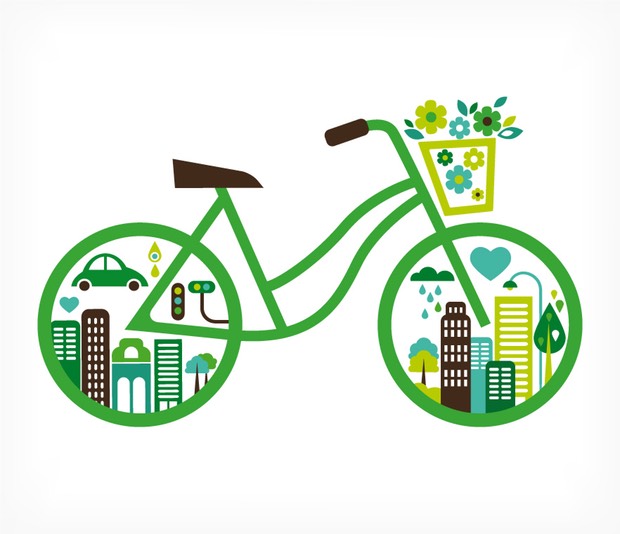
Photo by: zeroemissionpeople.com/author/taitus/
Burning one gallon of gas creates 20 pounds of carbon dioxide, and the average car emits about six tons of carbon dioxide every year. Bike riding uses minimal fossil fuels and is a pollution-free mode of transport. Bikes reduce the need to build, service and dispose of cars.
Cycling 10 km each way to work would save 1500 kg of greenhouse gas emissions each year. Also, as traffic delays and interruptions to traffic flow in Australia's six major cities account for around 13 million tonnes of greenhouse gas emissions each year, cycling during peak hours would contribute to further emission reductions by reducing congestion and improving traffic flow.
9 - Take the stairs.
Taking the elevator every day is easy and requires hardly any energy…at least not on your behalf. However, taking the elevator should not become part of your everyday routine, especially if you are capable of taking the stairs. Not someone who exercises regularly?
That is perfectly fine! To start, try incorporating the stairs into your daily routine at least once a day, or possibly twice a week to start and then progressively start to use them more often.
10 - Volunteer.
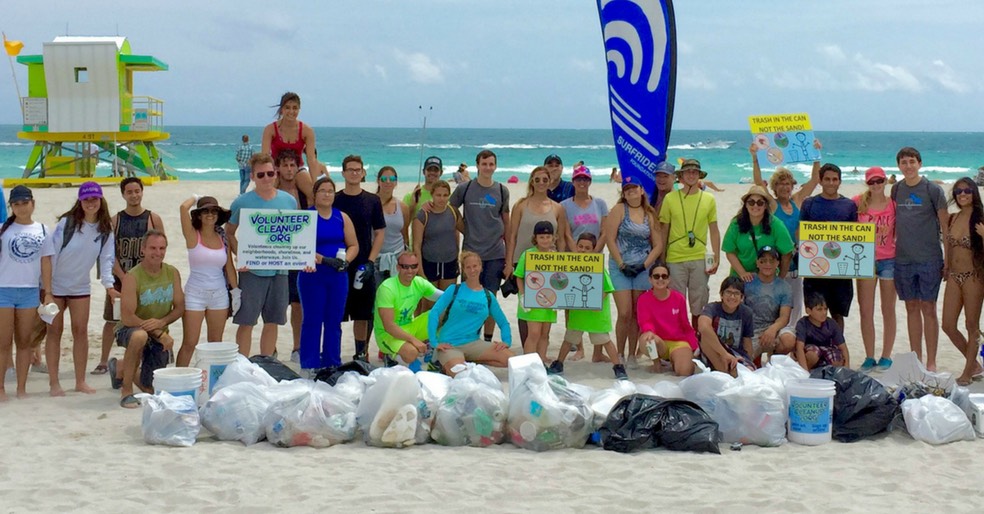
Photo by: volunteercleanup.org/find
Volunteer for cleanups in your community. You can get involved in protecting your watershed, too. Spend a few hours at the beach or a river with friends and help keep trash out of the ocean. By volunteering for waterway and beach clean ups you are helping keep plastic out of the ocean. Visit Surfrider Foundation to find a cleanup location near you!
11 - Educate.
When you further your own education, you can help others understand the importance and value of our natural resources. Tell people about ocean conservation and spread the word!
One person can make a difference, but think how much greater an impact you’ll have if you recruit your friends to the cause! Tell your friends about the issues and use social media to raise awareness. Let your network know you just joined the movement.
12 - Plant a tree.
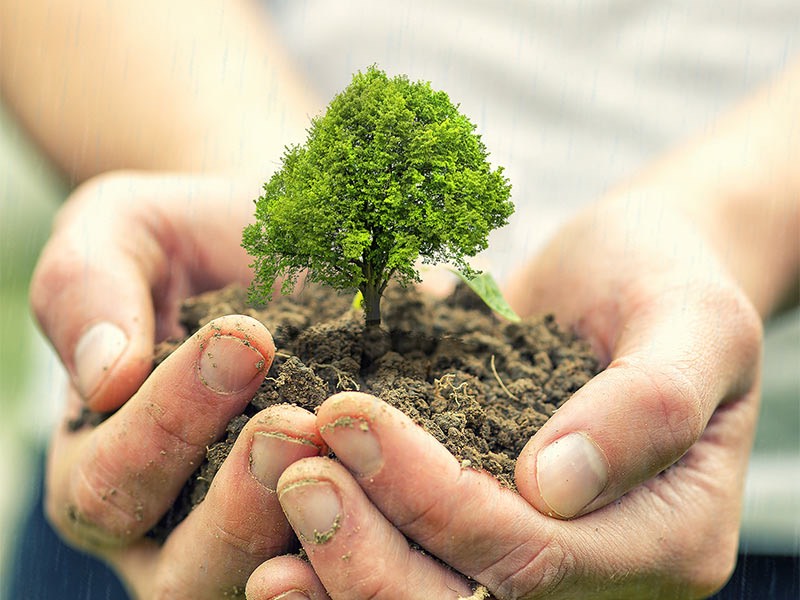
Photo by: Shutterstock.com
Trees provide food and oxygen. They help save energy, clean the air, and help combat climate change. An average size tree produces enough oxygen in one year to keep a family of four breathing. Three trees planted in the right place around buildings can cut air-conditioning costs up to 50 percent.
Trees increase the value of property. Houses surrounded by trees sell for 18-25 percent higher than houses with no trees.
Trees generate jobs and contribute raw materials for buildings, newspapers, books and more than 15,000 other forest products. Trees are renewable, biodegradable and recyclable. Wood by-products become such products as vitamins, plastics, vanilla flavoring, photographic film, toothpaste and medicines.
By planting 20 million trees, the earth and its people will be provided with 260 million more tons of oxygen. Those same 20 million trees will remove 10 million tons of CO2. Trees provide shelter and food for wildlife such as birds, squirrels, and bugs. Groves of trees provide food and cover for larger mammals, such as raccoons and deer.
Trees make people feel good. Workers are more productive when they see trees along their commute routes and from their office windows. Hospital patients who have a view of trees heal faster, use fewer pain medications, and leave the hospital sooner than patients with a view of a brick wall. Patients with a view of trees spend 8 percent fewer days in the hospital.
Consumers are willing to spend more money in shopping districts with trees. They are willing to pay more for products purchased in a shopping district with trees. Those same shoppers also say they are willing to stay longer and rate the products and stores as higher quality in a shopping district with the trees.
Trees in the landscape relax us, lower heart rates, and reduce stress.
13 - Don't send chemicals into our waterways.
Water pollution occurs when harmful substances—often chemicals or microorganisms—contaminate a stream, river, lake, ocean, aquifer, or other body of water, degrading water quality and rendering it toxic to humans or the environment. Our rivers, reservoirs, lakes, and seas are drowning in chemicals, waste, plastic, and other pollutants.
British poet W. H. Auden once noted, “Thousands have lived without love, not one without water.” Yet while we all know water is crucial for life, we trash it anyway. Some 80 percent of the world’s wastewater is dumped—largely untreated—back into the environment, polluting rivers, lakes, and oceans.
It’s easy to tsk-tsk the oil company with a leaking tanker, but we’re all accountable to some degree for today’s water pollution problem. Fortunately, there are some simple ways you can prevent water contamination or at least limit your contribution to it:
- Reduce your plastic consumption and reuse or recycle plastic when you can.
- Properly dispose of chemical cleaners, oils, and non-biodegradable items to keep them from ending up down the drain.
- Maintain your car so it doesn’t leak oil, antifreeze, or coolant.
- If you have a yard, consider landscaping that reduces runoff and avoid applying pesticides and herbicides.
- If you have a pup, be sure to pick up its poop.
One of the most effective ways to stand up for our waters is to speak out in support of the Clean Water Rule, which clarifies the Clean Water Act’s scope and protects the drinking water of one in three Americans.
Tell the federal government, the U.S. Army Corps of Engineers, and your local elected officials that you support the Clean Water Rule. Also, learn how you and those around you can get involved in the policymaking process. Our public waterways serve every American. We should all have a say in how they’re protected.
Below we brought you a video that showcases 22 incredible inventions that are currently helping and saving our planet. We kindly ask that you share this article with your friends to help create awareness in the fight against climate change and the overall destruction of our planet.
